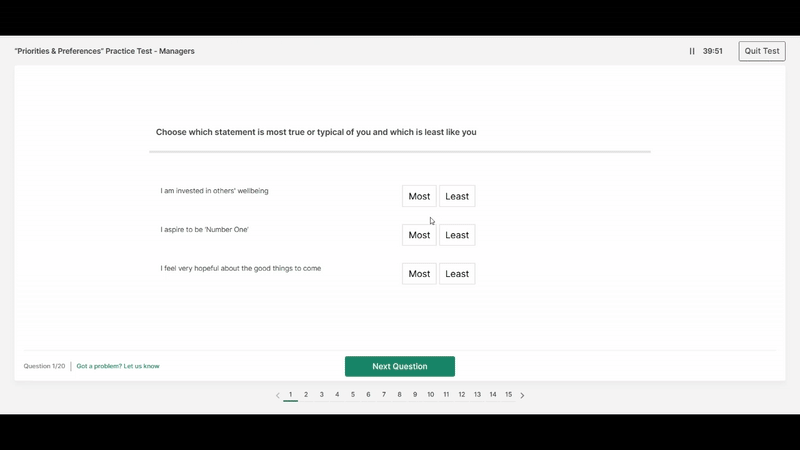Excel the Bloomberg Plum Assessment with confidence
Get complete coverage of the Bloomberg aptitude test, including logical reasoning, workplace behaviour, and personality profiling. Make the most of your preparation time with expert-designed practice tests and study guides that mirror the real assessment in format, style, and difficulty.
The Bloomberg Plum Assessment PrepPack Includes:
- Comprehensive coverage of all four Plum sections – including behavioural judgement, logical reasoning, and personal profiling.
- Tailored personality profiling – with dedicated guides and realistic simulations for 6 key position types.
- 6 in-depth study guides – build a solid understanding of each section before practising, helping you perform at your full potential.

Note: Taken from our Bloomberg Plum PrepPack
The PrepPack™ Includes:
- Full Bloomberg Plum Assessment Simulation:
- Priorities & Preferences
- Problem-Solving
- Your Description
- Social Interaction
- Study guides tailored for your position (management, research, team member, etc.)
Who Are We?
At JobTestPrep, we’ve helped thousands of candidates pass competitive hiring assessments,
including those at McKinsey and other top consulting firms. Our materials are designed by
psychometric experts and updated based on real candidate feedback to reflect the latest game formats.
Founded in 1992 by David Meshulam, JobTestPrep has become a trusted leader in online test preparation. With 30+ years of experience, 220+ courses, and over a million success stories, we combine expert-crafted PrepPacks with AI tools like our CV Analyzer and Interview Prep platform to help candidates worldwide prepare with confidence.
FAQ's
You will have instant access to your PrepPack, which includes all your practice tests. You can start practicing immediately, learning from detailed explanations and guides, while tracking your performance with accurate, tailored questions to help you understand the correct approach to solving your assessment.
After your purchase, you will receive two emails. The first will contain your payment receipt, and the second will include a login link along with information about our general terms, conditions, and refund policy. To access your PrepPack, simply log in and reset your password.
No, there is no limit. Your progress is saved in your account, allowing you to revisit previous attempts. Our performance tracker helps you focus on the test sections that require more attention.
Yes, you can extend your practice period. Simply contact our customer success team via c.serv@jobtestprep.com.




